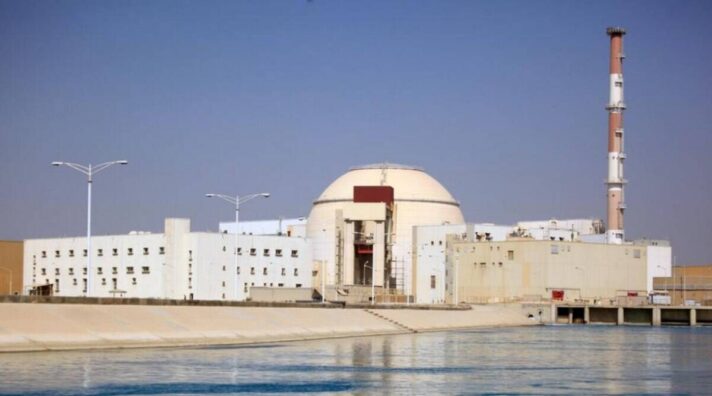
The attack was halted ‘before causing any damage to the building’, news agencies said.
A sabotage attempt against a building of the Iranian Atomic Energy Organization was foiled on Wednesday, Iranian media reported.
![An Iranian flag is seen outside the building housing the Bushehr nuclear power plant in the country's south [File: Begriyz Mehri/AFP]](https://www.aljazeera.com/wp-content/uploads/2010/02/201021101026468734_2.jpeg?resize=270%2C180) An Iranian flag is seen outside the building housing the Bushehr nuclear power plant in the country’s south
An Iranian flag is seen outside the building housing the Bushehr nuclear power plant in the country’s south
An Iranian news site close to security services said authorities thwarted a “sabotage attack” on the country’s civilian nuclear programme, without providing further information. Social media channels linked to the Islamic Revolutionary Guard Corp (IRGC) said a drone tried to attack the building. Another report said no “loss of life or property damage” was inflicted.
Nournews, a website believed to be close to Iran’s Supreme National Security Council, reported the attack was halted “before causing any damage to the building”. “Investigations are ongoing to identify the perpetrators and determine the facts surrounding the incident,” said Nournews.
When asked for comment, an Iranian official referred to the Nournews report. The official spoke on condition of anonymity as they did not have authorisation to discuss the matter with the media. No further details on the nature of the sabotage attempt or how it was averted were given.
Iran’s English-Language Press TV reported “the hostile attempt occurred on early Wednesday, but did not result in any casualties or damage owing to tight security precautions adopted following similar acts of sabotage against Iranian nuclear sites and scientists”.
Iran has accused Israel of several attacks on facilities linked to its nuclear program and killing its nuclear scientists over the past years. Israel has neither denied nor confirmed the allegations. Iran’s semi-official ISNA news agency said the building under attack was located near Karaj City, 40km (25 miles) west the capital of Tehran.
The website of state-owned IRAN newspaper published the same report without offering the location or other details. Iran’s Atomic Energy Organization describes the Karaj city facility as a centre founded in 1974 that deals with the improvement of the “quality of soil, water, agricultural and livestock production using nuclear technology”.
The reports come after a series of suspected sabotage attacks targeting Iran’s nuclear programme in recent months. In April, Iran’s underground Natanz nuclear facility experienced a mysterious blackout that damaged some of its centrifuges.
Iran described the blackout as an act of “nuclear terrorism”, raising regional tensions as world powers and Tehran negotiated a return to its tattered 2015 nuclear deal with world powers. Israel is widely believed to have carried out the sabotage that caused the outage, though it has not claimed it.
Last year, Natanz suffered a mysterious explosion at its advanced centrifuge assembly plant that authorities later described as sabotage. Iran now is rebuilding that facility deep inside a nearby mountain.
Iran also blamed Israel for the November killing of a scientist who began the country’s military nuclear programme decades earlier.
Tensions in the region have escalated amid the collapse of the deal that granted Iran sanctions relief in exchange for curbs on its nuclear programme. In 2018, then-President Donald Trump pulled the US unilaterally out of the nuclear deal, setting off a series of incidents that threatened the wider Middle East.
Wednesday’s incident comes as Tehran and world powers attempt to revive the hobbled 2015 agreement on Iran’s nuclear programme in Vienna talks, which an EU negotiator said on Sunday were moving “closer to a deal”.
That agreement is staunchly opposed by arch-foe Israel. Iran’s foreign ministry has indirectly accused Israel of attempting to scuttle the Vienna nuclear negotiations.
